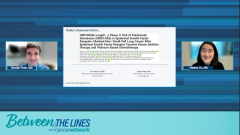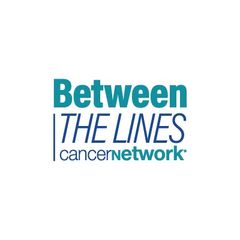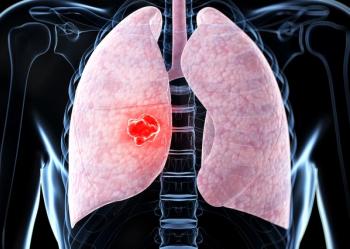
Unmet Needs and Emergent Studies in EGFR Mutated NSCLC
Expert medical oncologists examine remaining unmet needs in managing EGFR-positive lung cancer, including overcoming resistance to initial EGFR-directed therapy. The panel discusses ongoing trials targeting these needs.
Episodes in this series

This is a synopsis of an Insights series featuring Helena Yu, MD, of Memorial Sloan Kettering Cancer Center, and Sandip Patel, MD, of UCSD Moores Cancer Center.
Dr. Yu highlighted a major unmet need in EGFR-mutant non-small cell lung cancer (NSCLC) being the lack of approved treatments after progression on first-line osimertinib therapy, with only platinum chemotherapy options beyond that.
Dr. Patel discussed treating resistance as an important goal, though noted frustration around the lack of biomarker-driven antibody-drug conjugate (ADC) development, with agents studied broadly instead of biomarker-selected populations. He provided the example of MET-amplified EGFR TKI-refractory NSCLC where MET inhibitors can elicit responses. He also questioned whether adjuvant osimertinib truly cures micrometastatic disease long-term or just induces “sleeping” cancer cells that later re-emerge, similar to gastrointestinal stromal tumors treated with small molecule inhibitors.
The discussants touched on weighing toxicity risks of infusion therapy regimens versus patient convenience factors of oral tyrosine kinase inhibitor therapy that enable improved quality of life during treatment. Dr. Patel advocated strongly for precision oncology guided by biomarkers like Dr. Yu’s circulating tumor DNA-directed trial rather than “one-size-fits-all” combination strategies.
In summary, standard first-line therapy for EGFR-mutant NSCLC remains an EGFR TKI, with osimertinib being the only third-generation inhibitor approved. However, eventual resistance develops to all EGFR-directed regimens. Whereas 60% of earlier EGFR TKI resistance was from EGFR T790M mutations treatable with osimertinib, now only around half of osimertinib resistance involves targetable genomic alterations. Plasma and tissue profiling at progression is recommended, with 15% demonstrating histologic transformation. Beyond platinum doublets, subsequent treatment options offer low response rates around 14-15% and progression-free survival around 3 months in the real-world setting. Thus, there is great need for developing effective therapies following osimertinib and chemotherapy in EGFR-mutant NSCLC.
The discussants transitioned to discussing antibody-drug conjugates in development that target HER3, another member of the ERBB family. HER3 activation is an important mechanism causing resistance to EGFR inhibitors, making it an attractive therapeutic target. The phase 2 HERTHENA-Lung01 study is assessing the HER3-directed ADC patritumab deruxtecan (HER3-DXd) in EGFR-mutant NSCLC patients after progression on osimertinib and platinum chemotherapy. Early results demonstrate promising antitumor activity for this ADC approach. Drs. Yu and Patel discussed interpretation of the findings and next directions for confirming and expanding on the HER3-DXd efficacy signals in later-line EGFR-mutant NSCLC.
*Video synopsis is AI-generated and reviewed by Cancer Network editorial staff.
Newsletter
Stay up to date on recent advances in the multidisciplinary approach to cancer.


































































































